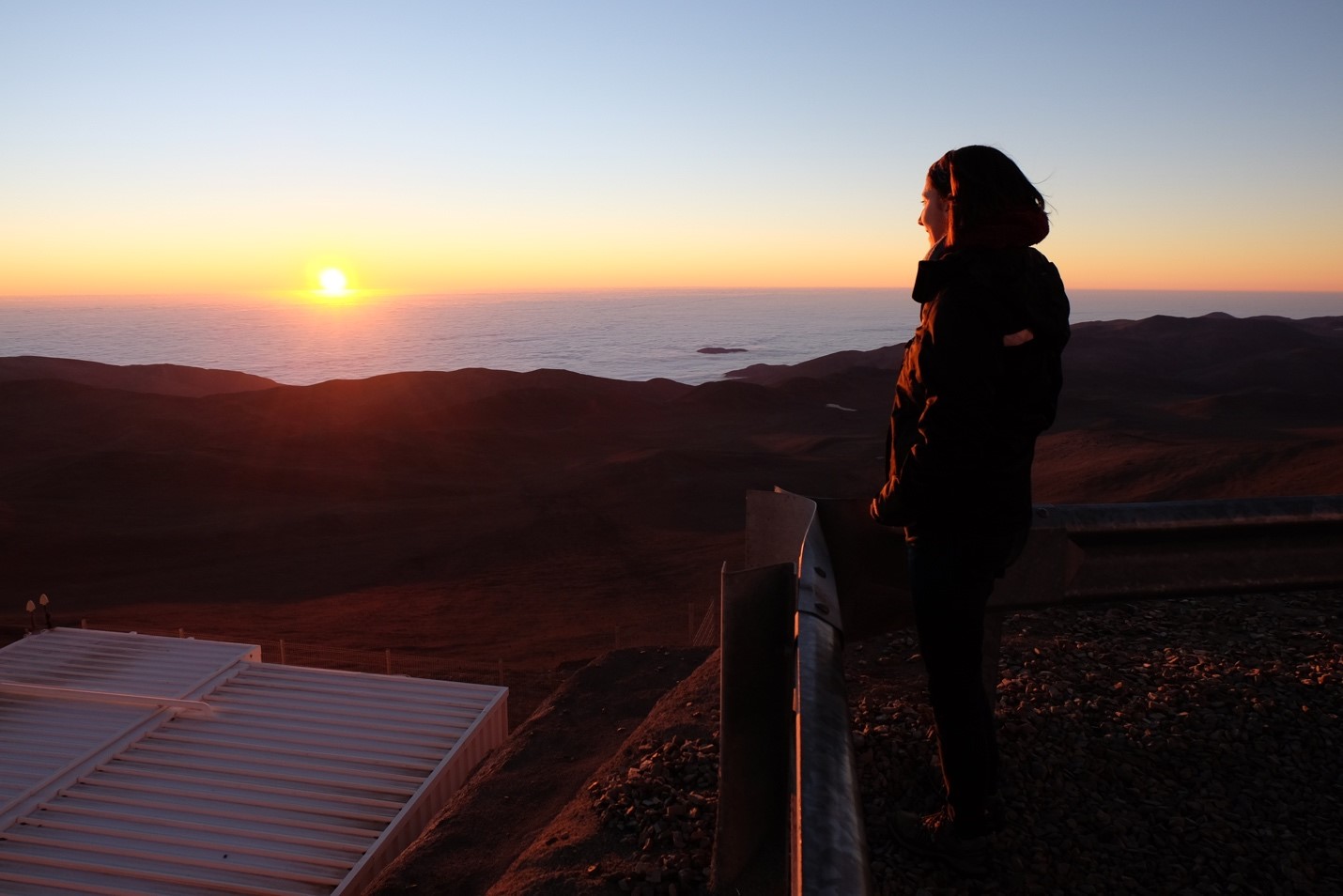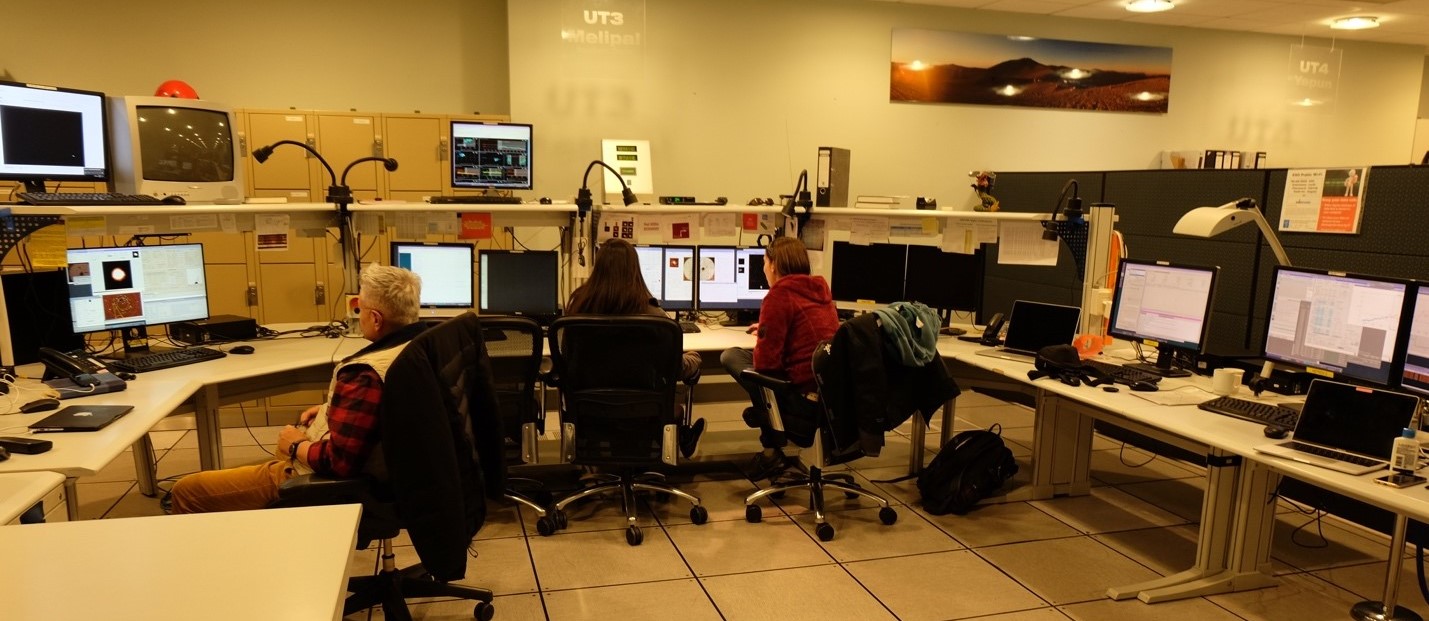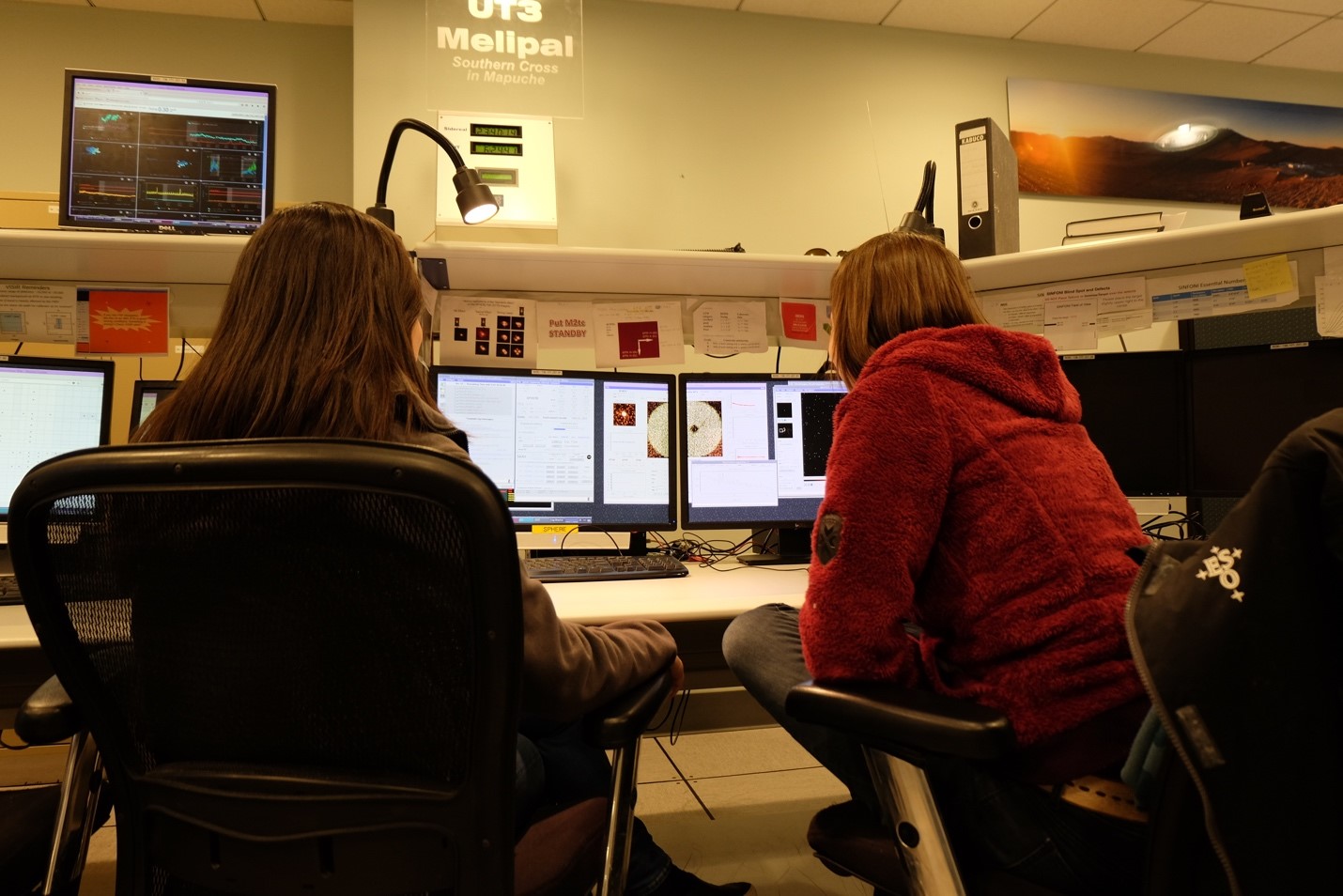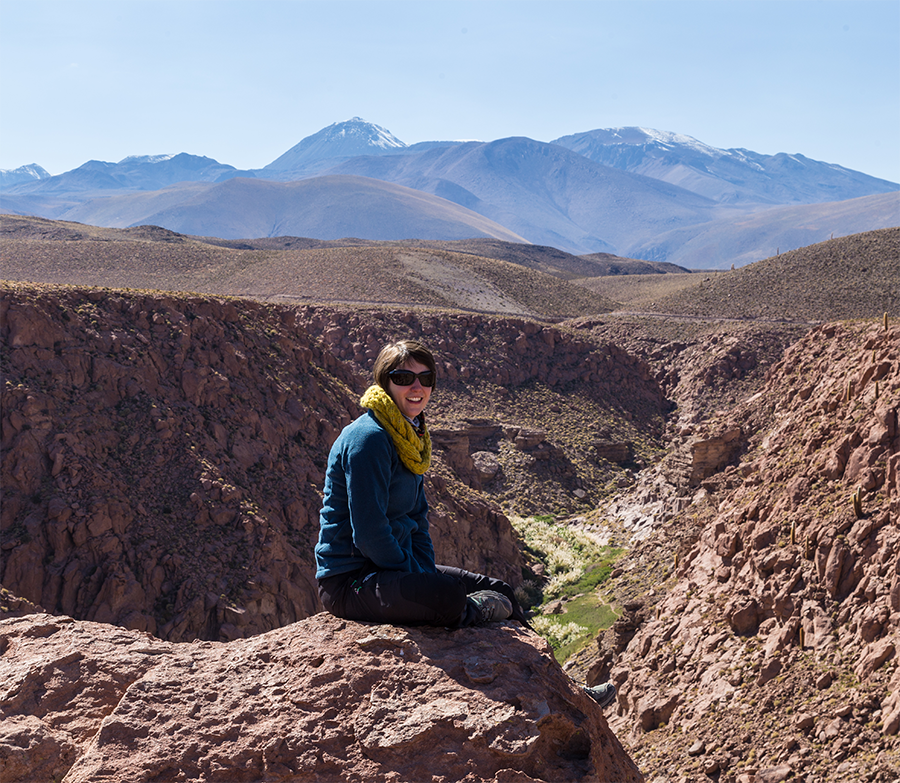
A date with a formidable science machine
An ESO Fellow on what it’s like to use the Very Large Telescope to discover more about the Universe
- How astronomers control ESO telescopes to observe the Universe
- How it feels to use the Very Large Telescope to detect exoplanets
- Some of the different tasks an ESO Fellow works on
- Why an observing shift might actually begin at three o’clock in the afternoon
15:00, 21 August 2019
My workday starts at 3 pm, after a quick breakfast and a visit to the gym. I use one of the observatory cars to drive from the astronomers’ hotel — the Residencia — up to the control room, which is located next to the telescopes and allows us to control them remotely. Contrary to what people might think, the astronomers at Paranal Observatory don’t always work entirely at night. Several of us actually work partly during daytime and partly during nighttime. This allows us to work on projects related to the instruments hosted on the telescopes here, assist visiting astronomers, or prepare observations for the coming night, for example.
Tonight, we have a visiting astronomer coming to observe with the Very Large Telescope’s (VLT’s) ESPRESSO instrument for the first part of the night. When I arrive at the control room, I make sure that everything is ready for the visitor’s observations, and have a look at what could be observed during the second part of the night, when we will work in service mode, performing observations on behalf of astronomers not present at Paranal. In total, about 60–70% of the observations are made in service mode, and about 30–40% in visitor mode.
Tonight, I am in charge of the VLT’s third Unit Telescope — UT3, also known as Melipal. At the moment, the UT3 is equipped with only one permanent instrument: SPHERE. However, ESPRESSO can be used with any VLT Unit Telescope, and is often used with UT3.

16:00
At 4 pm, I go to the daily meeting with the various engineering teams (mechanics, electronics, optics, IT, software…). During the meeting, we discuss the state of all the telescopes and instruments to make sure that they are ready for the night and we also plan for the next day.
After the meeting, it is already time to go back down to the Residencia for some dinner before the night starts. Days are short in winter! After dinner, I head back to the control room.
18:33
It’s sunset time! There is never a boring sunset here at Paranal.
19:00
Now that it’s dark, it’s time to start observing. To operate the telescope and the instruments, we are sitting at the UT3 console, inside the control room. In general, we need two people to operate one telescope: one astronomer and one Telescope and Instruments Operator (or TIO). The astronomer is in charge of selecting the observations, operating the instrument, and assessing the quality of the data, while the operator is in charge of the telescope itself. Tonight is a bit special and there are four of us at the telescope. I am the support astronomer, Nestor is the TIO, Rosita is a new astronomer-in-training, and we have a visiting astronomer. In visitor mode, the visiting astronomer decides what they want to observe, and the astronomer and TIO execute the observations and check the quality of the data.
The screens on the left of the image below allow us to control the telescope and are operated by Nestor. In the centre, you can see the control panels for the SPHERE instrument, while ESPRESSO's are on the right.


Tonight, we are observing several stars using ESPRESSO to try to detect or characterise exoplanets around them; ESPRESSO is specialised at hunting for rocky exoplanets. The observations are short, so that approximately every 30 minutes we command the telescope to point in another direction to observe a different star. The instructions on how to execute the observations are prepared by the visitors, and stored in what we call an “observing block” using dedicated software. We then use another piece of software to send the instructions to the telescope and instrument system and execute them in sequence. Being in the control room, it is very easy to forget that you are controlling such a large telescope. But every time I remember this, I feel both excited and amazed by the fact that I am the one observing with the VLT.
21:00
I decide to go out onto the platform to admire the sky and the telescopes before the moon rises. The beauty of the night sky and the Milky Way never fails to amaze me. While the observations are being taken, and after checking the quality of the data obtained so far, we do some observatory-related projects.
22:00
It is 10 pm, and after several hours of hard work, it is time for a break. The cooks have brought some snacks into the control building meeting room, so we eat some bread, cheese, ham and fruit to give us the energy we need to get through the rest of the night.
00:45
The second part of the night has now started and we are in service mode. It’s getting late, but fortunately we have the coffee machine to help us stay awake for a few more hours!
In service mode, we use a dedicated tool to decide which of the numerous observations requested by astronomers around the world (and approved by a committee) are most suitable to perform depending on the weather conditions. For now this is another ESPRESSO observation.

01:30
We are now changing to the other instrument that we can use with the UT3 telescope: SPHERE. This instrument allows us to correct for atmospheric turbulence — which scatters light and makes images blurry — so that we can obtain the best possible images for a telescope of this size. SPHERE is often used to search for exoplanets, or to image disks around protostars. While performing the observations, I keep training Rosita on how to operate UT3 at night.
03:00
Finally my long day/night ends, and it is time to go to bed. Nestor, our TIO, will continue the observations of the night together with Rosita. Only 12 hours to go until my next shift starts!
Numbers in this article
| 2 | Minimum number of people required to operate the VLT. |
| 12 | Number of hours in one of Cyrielle’s shifts at Paranal Observatory. |
| 30 | Number of minutes spent on observing each star for the visitor programme during the first half of the night. |
| 30–40 | Percentage of observations made in visitor mode. |
| 60–70 | Percentage of observations made in service mode. |
Biography Cyrielle Opitom
Cyrielle Opitom has been an ESO fellow in Santiago de Chile with duties at Paranal Observatory since November 2016. She obtained her PhD in 2016 from the Université de Liège, Belgium. Her main expertise is studying the composition of comets to understand what they can teach us about the formation history of the Solar System.

